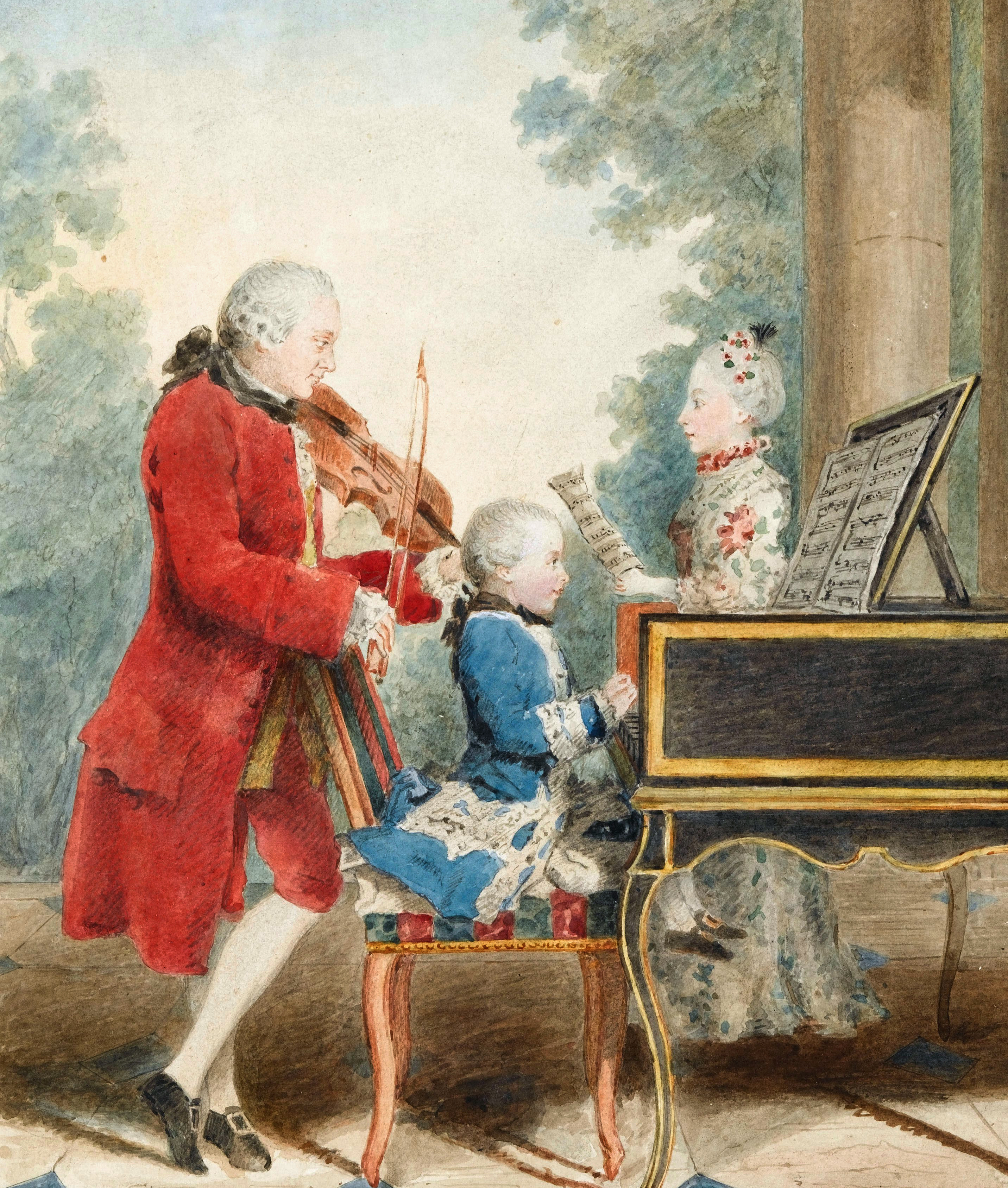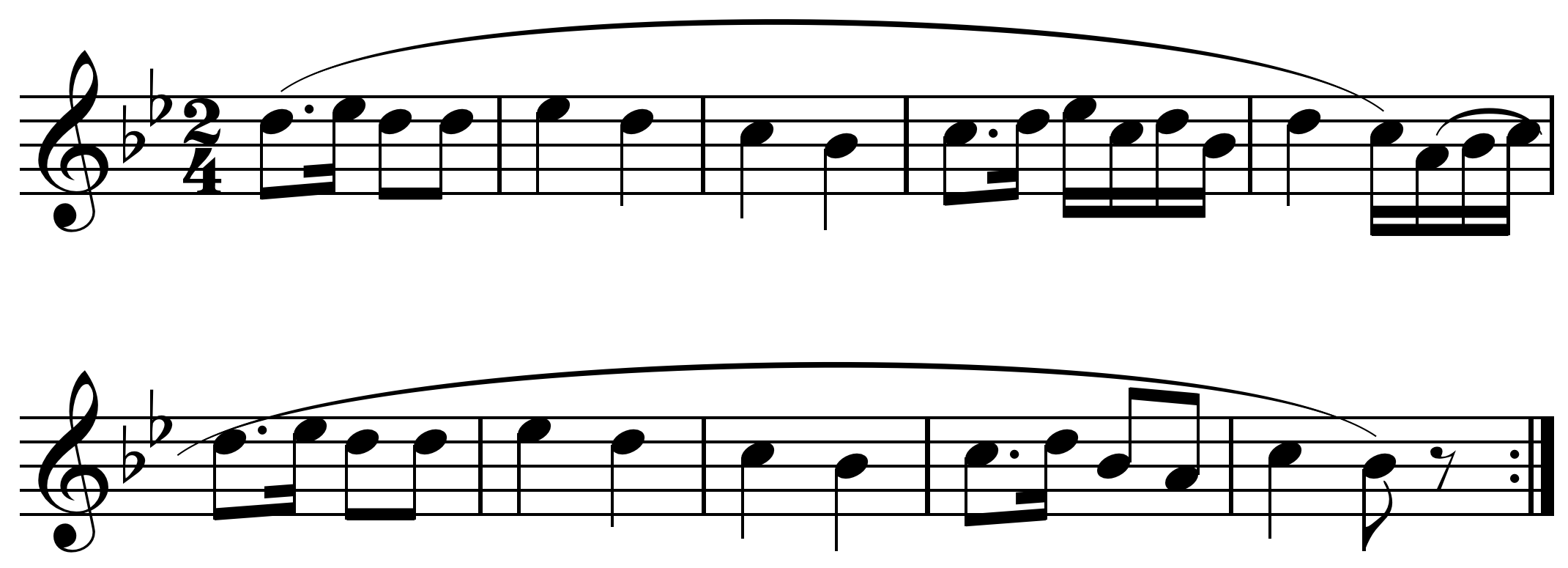|
Flute Concerto (Josef Reicha)
The ''Concerto for Flute and Orchestra'' was written by Josef Reicha in 1781, shortly after he went on a Grand Tour in the mid to late 1770s. Though the work was composed in 1781, far beyond the date music historians have deemed as the beginning of the classical era, it displays many characteristics of the galant musical style characteristic of the pre-classical post-Baroque music of the eighteenth century. Records do not indicate whether Reicha began composing the work while he was visiting the cosmopolitan centers of Europe but we may assume that he was indeed inspired by what he heard and saw based on the prevalence of galant musical characteristics presented throughout the work including (1) a simplistic, song-like, and clear melody, (2) short and periodic phrases In grammar, a phrasecalled expression in some contextsis a group of words or singular word acting as a grammatical unit. For instance, the English expression "the very happy squirrel" is a noun phrase which cont ... [...More Info...] [...Related Items...] OR: [Wikipedia] [Google] [Baidu] |
Josef Reicha
Josef Reicha (12 February 1752 – 5 March 1795), also spelt Rejcha, was a Czech cellist, composer and conductor. He was the uncle of composer and music theorist Anton Reicha. Josef Reicha was born in Chudenice. In 1761 he moved to Prague, where he was taught cello by Franz Joseph Werner. In 1771, Reicha became first cellist in the orchestra of Prince () Kraft Ernst von Oettingen-Wallerstein. Together with the famous violinist Anton Janitsch, who also played in the orchestra, Reicha toured several European cities during the late 1770s and visited Leopold Mozart in Salzburg in 1778. In his letters to Wolfgang Amadeus, Leopold praised Reicha's cello playing and compared the style of one of his cello concerts to those by Wolfgang Amadeus. Reicha adopted his nephew Anton in 1780 (Josef married in 1779, but the marriage produced no children) and subsequently taught him the violin and the piano. In 1785 Josef was made director of the orchestra in Bonn by Maximilian Francis of Au ... [...More Info...] [...Related Items...] OR: [Wikipedia] [Google] [Baidu] |
Classical Period (music)
The Classical period was an era of classical music between roughly 1750 and 1820. The classical period falls between the Baroque music, Baroque and Romantic music, Romantic periods. It is mainly Homophony, homophonic, using a clear melody line over a subordinate chordal accompaniment,Friedrich Blume, Blume, Friedrich. ''Classic and Romantic Music: A Comprehensive Survey''. New York: W. W. Norton, 1970 but counterpoint was by no means forgotten, especially in liturgical vocal music and, later in the period, secular instrumental music. It also makes use of ''Galant music, style galant'' which emphasizes light elegance in place of the Baroque's dignified seriousness and impressive grandeur. Variety and contrast within a piece became more pronounced than before, and the orchestra increased in size, range, and power. The harpsichord declined as the main keyboard instrument and superseded by the piano (or fortepiano). Unlike the harpsichord, which plucks strings with quills, pianos s ... [...More Info...] [...Related Items...] OR: [Wikipedia] [Google] [Baidu] |
Galant Style
The galant style was an 18th-century movement in music, visual arts and literature. In Germany a closely related style was called the '' empfindsamer Stil'' (sensitive style). Another close relative is rococo style. The galant style was drawn in opposition to the strictures of the Baroque style, emphasizing light elegance in place of the Baroque's dignified seriousness and high grandeur. Music In music, the galant emphasis was on simplicity, immediacy of appeal, and elegance. Fashion In fashion, galant featured perfumed handkerchiefs and powdered wigs for both sexes. The fantastic exotic asymmetry of bizarre silk Bizarre silks are a style of figured silk fabrics popular in Europe in the late 17th and early 18th centuries. Bizarre silks are characterized by large-scale, asymmetrical patterns featuring geometrical shapes and stylized leaves and flowers, in ... patterns were symptomatic of galant tastes. References External links {{wiktionary-inline, Galant 18th century i ... [...More Info...] [...Related Items...] OR: [Wikipedia] [Google] [Baidu] |
Melody
A melody (), also tune, voice, or line, is a linear succession of musical tones that the listener perceives as a single entity. In its most literal sense, a melody is a combination of Pitch (music), pitch and rhythm, while more figuratively, the term can include other musical elements such as Timbre, tonal color. It is the foreground to the background accompaniment. A line or Part (music), part need not be a foreground melody. Melodies often consist of one or more musical Phrase (music), phrases or Motif (music), motifs, and are usually repeated throughout a Musical composition, composition in various forms. Melodies may also be described by their melodic motion or the pitches or the interval (music), intervals between pitches (predominantly steps and skips, conjunct or disjunct or with further restrictions), pitch range, tension (music), tension and release, continuity and coherence, cadence (music), cadence, and shape. Function and elements Johann Philipp Kirnberger arg ... [...More Info...] [...Related Items...] OR: [Wikipedia] [Google] [Baidu] |
Phrase (music)
In music theory, a phrase () is a unit of Meter (music), musical meter that has a complete musical sense of its own, built from figure (music), figures, motif (music), motifs, and Cell (music), cells, and combining to form Melody, melodies, period (music), periods and larger Section (music), sections. Terms such as ''sentence'' and ''verse'' have been adopted into the vocabulary of music from linguistic syntax. Though the analogy between the musical and the phrase, linguistic phrase is often made, still the term "is one of the most ambiguous in music....there is no consistency in applying these terms nor can there be...only with melodies of a very simple type, especially those of some dances, can the terms be used with some consistency." John D. White defines a phrase as "the smallest musical unit that conveys a more or less complete musical thought. Phrases vary in length and are terminated at a point of full or partial repose, which is called a ''cadence''." Edward T. Cone, ... [...More Info...] [...Related Items...] OR: [Wikipedia] [Google] [Baidu] |
Tonality
Tonality is the arrangement of pitch (music), pitches and / or chord (music), chords of a musical work in a hierarchy of perceived ''relations'', ''stabilities'', ''attractions'', and ''directionality''. In this hierarchy, the single pitch or the root (music), root of a triad (music), triad with the greatest ''stability'' in a melody or in its harmony is called the tonic (music), ''tonic''. In this context "stability" approximately means that a pitch occurs frequently in a melody – and usually is the final note – or that the pitch often appears in the harmony, even when it is not the pitch used in the melody. The ''root'' of the tonic triad forms the name given to the key (music), key, so in the key of C major, C major the note C can be both the tonic of the scale (music), scale and the root of the tonic triad. However, the tonic can be a different Musical tone, tone in the same scale, and then the work is said to be in one of the mode (music), ''modes'' of that ... [...More Info...] [...Related Items...] OR: [Wikipedia] [Google] [Baidu] |
Tonic (music)
In music, the tonic is the first scale degree () of the diatonic scale (the first note of a scale) and the tonal center or final resolution tone that is commonly used in the final cadence in tonal (musical key-based) classical music, popular music, and traditional music. In the movable do solfège system, the tonic note is sung as ''do''. More generally, the tonic is the note upon which all other notes of a piece are hierarchically referenced. Scales are named after their tonics: for instance, the tonic of the C major scale is the note C. The triad formed on the tonic note, the tonic chord, is thus the most significant chord in these styles of music. In Roman numeral analysis, the tonic chord is typically symbolized by the Roman numeral "" if it is major and by "" if it is minor. These chords may also appear as seventh chords: in major, as M7, or in minor as 7 or rarely M7: The tonic is distinguished from the root, which is the reference note of a chord, rathe ... [...More Info...] [...Related Items...] OR: [Wikipedia] [Google] [Baidu] |
Dominant (music)
In music Music is the arrangement of sound to create some combination of Musical form, form, harmony, melody, rhythm, or otherwise Musical expression, expressive content. Music is generally agreed to be a cultural universal that is present in all hum ..., the dominant is the fifth degree (music), scale degree () of the diatonic scale. It is called the ''dominant'' because it is second in importance to the first scale degree, the tonic (music), tonic. In the Solfège#Movable do solf%C3%A8ge, movable do solfège system, the dominant note is sung as "So(l)". The Triad (music), triad built on the dominant note is called the dominant chord. This chord is said to have dominant Function (music), function, which means that it creates an instability that requires the tonic (music), tonic for resolution (music), resolution. Dominant triads, Seventh chord, seventh chords, and Ninth chord, ninth chords typically have dominant function. Leading-tone triad, Leading-tone triads and Leadin ... [...More Info...] [...Related Items...] OR: [Wikipedia] [Google] [Baidu] |
Flute Concertos
The flute is a member of a family of musical instruments in the woodwind group. Like all woodwinds, flutes are aerophones, producing sound with a vibrating column of air. Flutes produce sound when the player's air flows across an opening. In the Hornbostel–Sachs classification system, flutes are edge-blown aerophones. A musician who plays the flute is called a flautist or flutist. Paleolithic flutes with hand-bored holes are the earliest known identifiable musical instruments. A number of flutes dating to about 53,000 to 45,000 years ago have been found in the Swabian Jura region of present-day Germany, indicating a developed musical tradition from the earliest period of modern human presence in Europe.. Citation on p. 248. * While the oldest flutes currently known were found in Europe, Asia also has a long history with the instrument. A playable bone flute discovered in China is dated to about 9,000 years ago. The Americas also had an ancient flute culture, with instruments ... [...More Info...] [...Related Items...] OR: [Wikipedia] [Google] [Baidu] |




